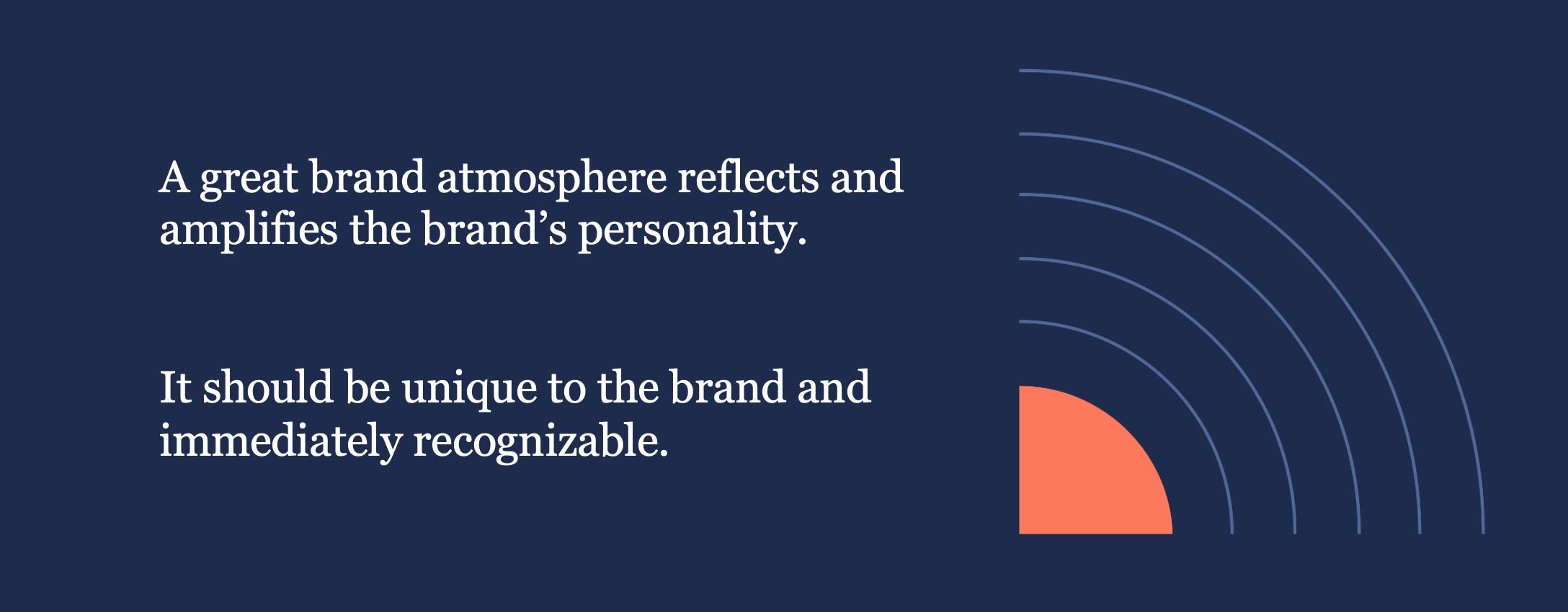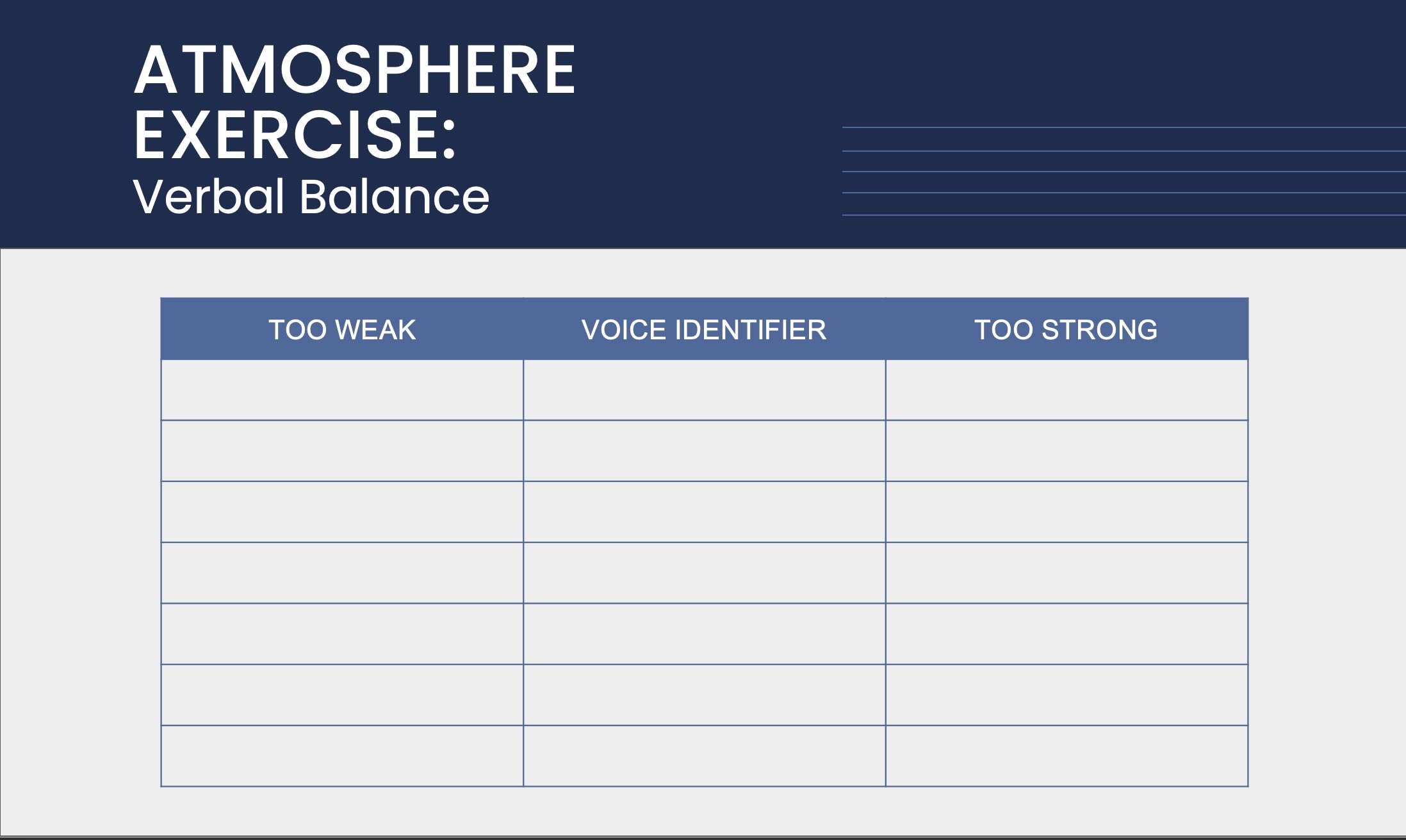
Creating an Inviting Brand Atmosphere | Elevation's Guide to Brand Building Part 2
Written by Elevation
How does your audience experience your brand?
To answer that question, let’s think about how we experience the world around us. You are surrounded by a countless number of stimuli. The sound of sizzling on the stove. The smell of a grilled cheese, suddenly turning acrid. The sight of smoke, billowing in the air.
Actually, hold on, I think I just burned my lunch.
Our atmosphere is all around us: it’s everything we hear, see, and experience. It determines how we behave: if we tense up, or if we relax. If we stick around, or if we leave. If we eat, or have to throw our lunch in the trash .
Moving back to our overarching metaphor, this part of Elevation’s Guide to Brand Building focuses on creating an inviting atmosphere for your brand’s planet through visual and verbal identities — aka how audiences see and hear your brand. For a planet to be inhabitable, it needs an inviting atmosphere with the right combination of elements. Too much of one element, and a planet’s atmosphere becomes poison.
And no one wants their brand to go toxic.
In part 1 of this guide, we covered how to build a strong brand core based on your ideals and vision for the world. Now it’s time to take those concepts and translate them into your visual and verbal identities.
We’ve reiterated a few times that branding isn’t just about having a great logo and set of fonts. But it’s not not about that.
Having a stellar visual identity and verbal identity can help attract the right brand ambassadors and talent who are in alignment with your core principles, and it will encourage them to stick around for the long haul.
In this section of Elevation’s Guide to Brand Building, we’re going to explain all the elements that go into visual and verbal identity, and we’ll showcase how some of the world’s top companies are using them to bring their brands to the next level. We’ll also provide an exercise to help you make sure your brand atmosphere cultivates familiarity and trust.
Skies are clear, so let’s get ready for takeoff.
What makes a great brand atmosphere?

In our brand planet metaphor, the brand atmosphere is an outward reflection of the brand core. Like Earth’s atmosphere, the brand atmosphere is what you see, hear, and experience. It’s where people first connect with a brand and begin sharing experiences.
A brand’s atmosphere is comprised of two categories of elements: visual identity and verbal identity. As they build upon your brand’s core, these are more than just aesthetics. They create the experience and perception of your brand. They attract new customers and new talent to your world by conveying an atmosphere that says, “This is the type of place you want to be.”
A great brand atmosphere reflects and amplifies the brand’s personality. It should be unique to the brand and immediately recognizable.
By carefully selecting and combining the right elements, brands can create a recognizable and consistent atmosphere that resonates with their audience.
But what are those elements?
Just as our atmosphere is made up of the building blocks for life (oxygen, carbon dioxide, and the like), a brand’s atmosphere contains the building blocks for its outward identity as well as the elements that build brand-audience connections.
It starts with all the ways a brand is seen and heard.
Defining the elements of visual identity

As the name implies, visual identity is every way your brand is seen. While you can’t judge a book by its cover, a book with a visually appealing cover with good typography is more likely to be picked up off the shelf than one sporting Comic Sans. Appearances aren’t everything, but, in branding, they are important.
- Logo: A visual representation of a brand, a logo is often used as a symbol or mark to identify a company or product. A company’s logo can be found everywhere, from being stamped on products to your company’s social media profiles. Logos can be graphical or composed of text, such as a wordmark. Logos are incredibly important, as they can be used as a shorthand for a brand’s name, such as the Nike swoosh.
- Colors: Colors evoke certain feelings and emotions in viewers, so it’s important to choose your brand colors with care. These sets of tones will represent your company and can help create a recognizable and unique look for your brand. These colors also need to be consistent. Those two tones of red might look “close enough,” but people will notice.
- Typography: Let’s talk about one of our favorite topics: fonts! Typography can be used to convey a certain personality and unique look that fits a brand. For example, a modern, tech-savvy brand might choose a clean, modern font, while a more traditional or classic brand might choose a serif font. The size and placement of the type can also be used to emphasize certain messages and create a visual hierarchy. Our brilliant Art Director and resident Typography nerd, Dianne, wrote a deep-dive on the five most influential typographers in the last century and showed their impact on branding.
- Photography: Photography is a powerful tool for defining a brand’s visual identity. Both still photography and videography (those newfangled moving pictures) can be used to create a mood, convey a message, and connect with an audience. Consider elements like composition, color balance, and contrast, as these will greatly affect what kind of message your photography sends. A picture of a subject evenly and brightly lit will say something completely different than a shot of the same subject with moody and punchy lighting.
- Graphic Design: Brands can use graphic design to create attractive, unique, and memorable visuals. Graphic Designers combine colors, shapes, images, and text to create a cohesive look and feel like they belong to the brand. Graphic design can be utilized everywhere from webpages and social channels to product packaging to broadcast ads.
- Iconography: Iconography is the use of symbols, images, and/or graphic elements to represent a concept, idea, or message. By using iconographic imagery, brands can communicate complex ideas in a simple and visual way. Good iconography has many advantages, one of the most important being its ability to be understood in multiple markets without needing to be localized.
- Motion Behaviors: Now that you know how your brand looks, ask yourself how it moves. Motion behaviors refer to the use of animation, video, motion graphics, and other visual effects. The use of motion can create a dynamic, memorable, and engaging visual identity.
Now that we’ve covered many of the ways your brand is seen, let’s talk about how your brand talks.
Defining the elements of verbal identity
Verbal identity: It’s not just about what you say, but how you say (and write) it. This can be often overlooked, but things like tone and attitude have a dramatic effect on how your message translates across all forms of communication.
Utilized everywhere from marketing campaigns to internal messaging, the voice of a brand is critical for developing trust and familiarity with an audience.
- Name: What’s in a name? A lot, it turns out. A brand’s name can convey its core principles or central mission, which can help build recognition. Bonus points if it’s easy to remember and catchy. A strong name can help a brand stand out and establish credibility, while a weak name can be easily forgotten or confused with another brand.
- Voice: A brand’s voice is the verbal reflection of its personality, which we covered in the Brand Core section of this guide. Your brand’s speaking and writing voice should convey the personality descriptors we covered in the exercise in Part 1. A brand’s voice can be friendly, clever, professional, cutting-edge, or casual. Just as you would use consistent colors across your visual identity, your brand should develop a house style of how your voice sounds. Certain phrases will fit within your brand’s voice, while you’ll want to avoid other phrases.
- Tone: Now, isn’t tone just a different way of saying voice? No, not quite. While they are similar, voice and tone are distinct. While a brand’s voice reflects a consistent personality and style, tone is much more how you deliver a specific message. While your voice should remain consistent, your tone should vary depending on who you’re talking to an what you’re saying. For example, your brand’s voice can be friendly and witty, but if you need to deliver a serious message, you should deliver it with a serious tone. While tone can change, you want to make sure it doesn’t clash with or undercut your voice. Brand voice is your verbal toolbox, and tone are all the tools you have inside of it.
Building trust and familiarity

Two essential connecting elements that must be present in a flourishing brand atmosphere are trust and familiarity.
You not only need to carefully select the elements of your visual and verbal identity, you need to be consistent in how you employ them. Once you’ve established your identity, your audience knows what to expect from you. Your logo, color palette, and typography will create recognition, and your voice will foster a relationship between you and your audience.
That’s not to say you can’t adapt over time. Just as with our personal relationships, change is part of life. But if a close friend or colleague started acting like a completely different person each time we saw them — dressing in completely different styles, talking with some new accent — we’d lose trust in them. (Unless that friend was Daniel Day Lewis. Then we’d give him an Oscar).
So being consistent doesn’t mean boring, safe, or tired. But, all messaging should come from consistency and authenticity, regardless of the message or the delivery method.
Case Study 1: Mailchimp
“Mailchimp helps small businesses do big things, with the right tools and guidance every step of the way.”
Mailchimp builds trust with its small business users by offering free tutorials, guides, and even custom entertainment content like documentaries and podcasts. In their case, reliable resources equal trust. And, anyone who knows Mailchimp knows that they are quirky. Through several evolutions of the brand and countless marketing campaigns, their quirky nature has always been at the core, giving their users a familiar sense, no matter what changes.
Case Study 2: Louis Vuitton
Louis Vuitton is renowned for its luxury and quality, and these values are reflected in its visual identity. Its iconic monogram is the cornerstone of the brand, making their designer handbags and other accessories easily recognizable. This helps reinforce Louis Vuitton as a status symbol, as everyone will know what type of handbag you have just by glancing at the monogram on the outside.
Case Study 3: Apple
Apple famously reinforces its branding through their sleek and minimal designs. One of the most valuable brands in the world, Apple is known for beautifully designed computers that especially appeal to creatives. Apple bucked a trend in the PC laptop space in the early 2000s when they refused to put other company’s stickers or logos on their devices, such as “Intel Inside.” Other manufacturers did this as a way to save money through deals with the companies featured on the stickers, but Apple created value in the long run by resisting this in a few ways:
- Keeps the sleek and minimal design of their products, which is especially valued by the audience of design-conscious creatives.
- Reinforces their products as premium by not including cheap looking stickers — which helps justify their premium price tag.
While Louis Vuitton and Apple are both known for their high-quality and high-margin products, they have distinct visual and verbal identities that work for each brand. Louis Vuitton exudes luxury in their language, logo, and photography. However, if you remember the short lived $10,000 solid gold Apple Watch, Apple hasn’t succeeded as a luxury brand. However, they do succeed as a premium brand, with a visual and verbal identity that is more casual and approachable than luxury.
The differences of these two brands show the power in creating the right kind of brand atmosphere. Despite having some qualities (and probably some customers) in common, Louis Vuitton’s atmosphere wouldn’t work on Apple’s brand planet, and vice versa.
Atmosphere Exercise: Verbal Balance

Take 10 minutes to write down all the words that best represent the voice of your brand. You can include simple concepts like “smart” or “professional,” and then dig a little deeper for more specifics like “neighborly” or “mischievous.”
Select 3-5 answers that everyone agrees are best fits.
Next, write the chosen identifiers in the middle column. In the left and right columns, write similar terms that are too weak and too strong to represent your brand’s voice.
If any of the edge terms fit better for your brand, move them to the center column and repeat the process.
By the end of the exercise, you’ll have a balanced set of terms to easily communicate through your brand’s voice.
Brand Atmosphere Recap
That wraps up this part of Elevation's Guide to Brand Building. To recap: Your brand atmosphere is a combination of your visual identity and your verbal identity. Visual identity is how your brand looks, from your logo to your color palette. Verbal identity is what you say and how you say it.
These elements must be a reflection of your brand core and be consistent in order to build trust and familiarity.
We’re now two thirds of the way through building a brand planet. Let’s start attracting some orbiters through strategic content. Don’t miss the rest of Elevation’s Guide to Brand Building for more on how to do just that.
Topics: brands
